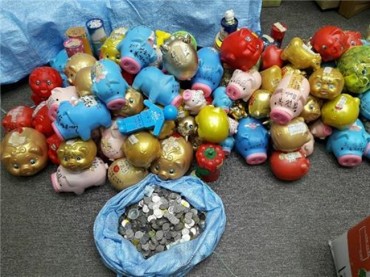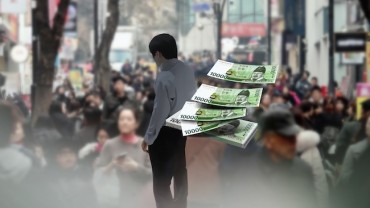
Fmr. Supreme Court justice Kim Ji-hyung, head of a commission on the fate of the Shin Kori nuclear reactors, announces the result of a three-month public opinion gathering process during a briefing at the government complex in Seoul on Oct. 20. (image: Yonhap)
SEOUL, Oct. 20 (Korea Bizwire) — South Korea is set to resume work on two nuclear reactors on the southeastern coast after a three-month hiatus, as a state commission gave the green light to complete construction Friday and which is expected to affect the government’s nuclear phase-out plan.
The construction of the Shin Kori-5 and Shin Korea-6 in Ulsan, 414 kilometers southeast of Seoul, has been put on hold since July 14 as the government wanted to assess public opinion to decide on their fate, the first such action taken by the country.
The commission’s recommendation based on surveys of a 471-member civilian jury and several rounds of public debates relieved anxieties felt by local companies involved in the project. However, it is viewed as delaying the drive by Seoul to push forward its new renewable energy initiative to wean South Korea away from atomic energy.
Although President Moon Jae-in pledged to abandon the project during the election campaign, local contractors and residents have strongly opposed the move and threatened to take legal action to obtain financial compensation.
A consortium led by the state-run Korea Hydro & Nuclear Power Co. (KHNP) has already spent 1.6 trillion won (US$1.4 billion) on the project that began last year, with construction already being 30 percent complete.
The KHNP said it will take the necessary steps to resume construction after the committee’s recommendation is accepted during a Cabinet meeting set for Tuesday.
“Once we receive the official documents from the government, we will notify contractors of the decision and push for the resumption of construction based on changed contract terms, which were delayed due to the temporary suspension,” the KHNP said.
The KHNP estimated the financial damage on local contractors to be about 100 billion and set out a plan to use reserve funds to compensate them.
The intensely debated issue, which was decided by a margin of 19 percentage points in favor of resuming the work, highlights differing views between the government’s renewable energy push and established industries that prefer nuclear power to meet the country’s needs for cheap electric power.
Those who support the reactors said the government should reflect the committee’s recommendation when it draws a broader energy roadmap, which is due later this year.
“The construction was underway in accordance with the due process. Taking the issue to a public debate could hurt the credibility of the government’s policy,” Jung Yong-hun, a professor at Korea Advanced Institute of Science & Technology (KAIST), said. “The committee’s call for resuming the construction sends a message that the government should reconsider its nuclear-free policy.”
Although the three-month deliberative process focused on the fate of the two reactors under construction, experts stressed the need to continue open discussions on the future of the country’s energy policy.
“I think there was consensus that aborting the project could create a huge fallout because such a move involves financial compensation and legal procedures, as well as employment problems,” Roh Dong-seok, a senior researcher at the Korea Energy Economics Institute, said.
“As the committee sided with resumption (of construction), the government should come up with policies to ease public concerns. Public debates of far wider breadth and depth should continue on how to design the energy mix for a sustainable power supply.”
South Korea relies on imported resources to meet 95 percent of its energy needs, while 24 reactors generate about 30 percent of its electricity.
With four new plants nearly completed, the Moon administration has abandoned a plan to build four more and pushed for an early closure of the Wolsong-1 unit, now the nation’s oldest reactor.
Although renewable sources like solar and wind have grown in popularity in recent years, experts say the local infrastructure and research levels are still in their early stages.
They have urged the government to greatly expand investment in infrastructure for eco-friendly energy and ease regulations on new facilities, while calling for consistent policy implementation of long-term goal.
(Yonhap)






